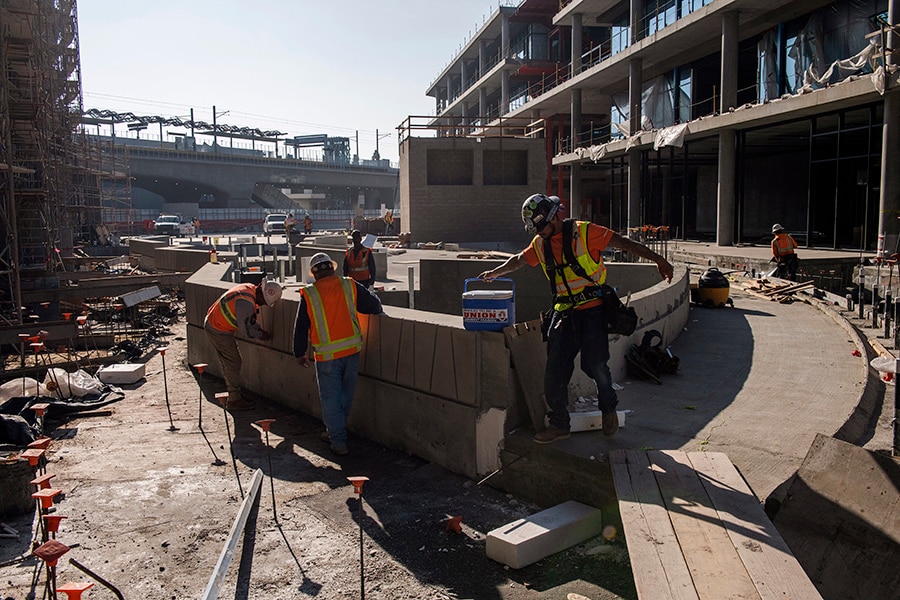
U.S. job growth stays on streak, defying anxiety
At 3.5%, November was the 21st consecutive month with an unemployment rate of 4% or lower and the employment report featured payroll increases of 266,000, offering a counterpoint to recent anxieties about an escalating trade war and weakening global economy
 Workers at a construction site in Culver City, Calif., on Nov. 11, 2019. Employers added 266,000 jobs in November, a blockbuster number even after accounting for the one-time boost of about 41,000 striking General Motors workers who returned to the job. Image: Andrew Cullen/The New York Times
Workers at a construction site in Culver City, Calif., on Nov. 11, 2019. Employers added 266,000 jobs in November, a blockbuster number even after accounting for the one-time boost of about 41,000 striking General Motors workers who returned to the job. Image: Andrew Cullen/The New York Times
America’s job engine has again defied jittery stock traders, bearish forecasters and blue-ribbon economists to deliver eye-catching gains and power an exceptionally resilient economy.
November’s reassuring employment report, released Friday by the Labor Department, featured payroll increases of 266,000 and offered a counterpoint to recent anxieties about an escalating trade war and weakening global economy.
“I think that this report is a real blockbuster,” said Daniel Zhao, senior economist at the career site Glassdoor. “Payrolls smashed expectations.”
At 3.5%, November was the 21st consecutive month with an unemployment rate of 4% or lower. Revisions to earlier estimates brought the average monthly payroll gain for the past three months to 205,000, a substantial achievement for the 11th year of an economic expansion.
The hearty performance presented President Donald Trump with something to showcase during a week when he fielded criticism for fueling trade tensions with Argentina, Brazil, China and European allies. Abroad, foreign leaders were caught on camera taking gibes at the president, while at home, congressional Democrats pressed ahead with plans that could result in an impeachment vote before the end of the year.
At the moment, many Americans are more focused on expanding payrolls and fatter paychecks, and in that respect, Trump has delivered. “It’s the economy, stupid,” he wrote on Twitter just before the report’s release.
©2019 New York Times News Service




